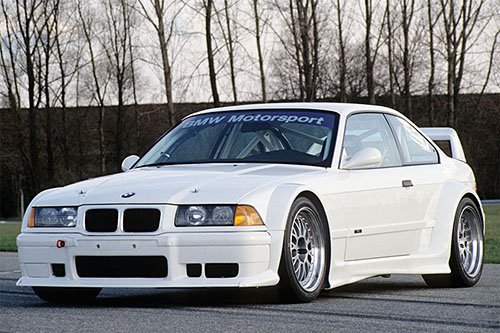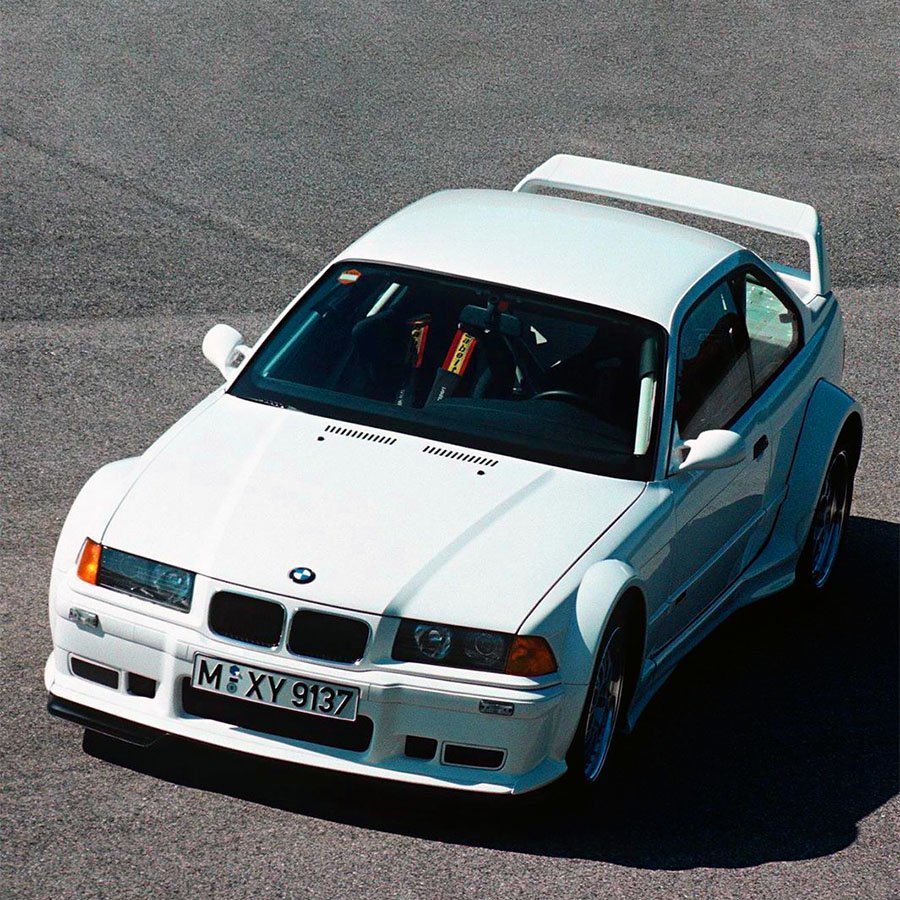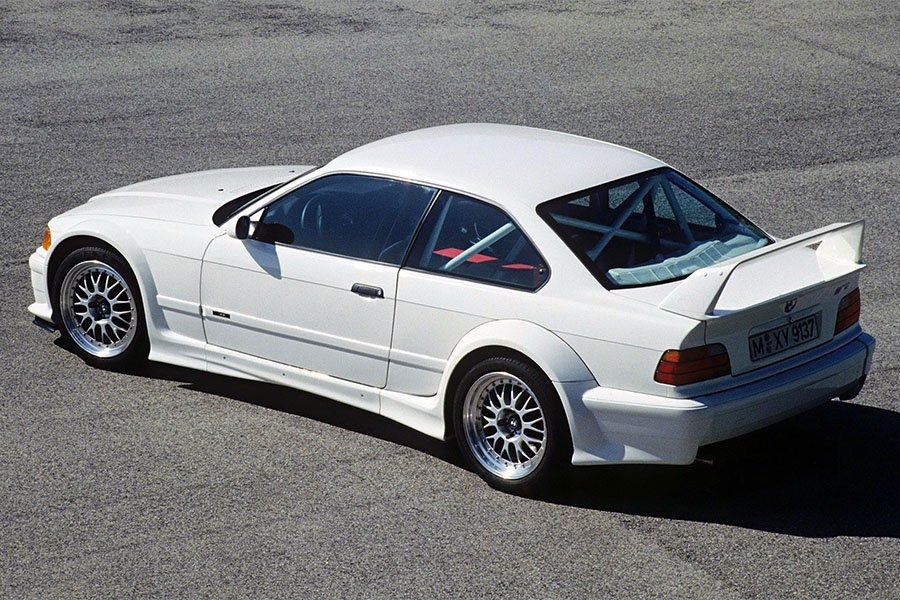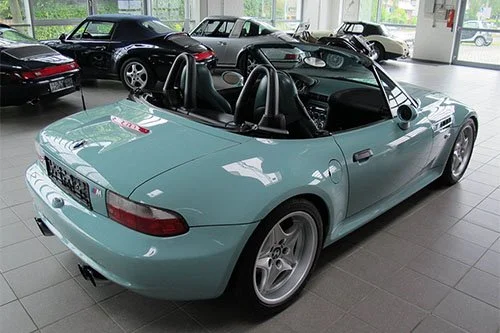Guide: BMW E36 M3 GTR Strassenversion
Background
BMW Motorsport created the original E30 M3 as a Group A homologation special for Touring Car racing and Rallying. Between 1986 and 1992, the M3 proved extremely effective and claimed a huge cache of victories in a variety of disciplines.
However, while the E30 M3 ultimately sold in far greater numbers than the 5000 required for Group A homologation, it was a comparatively unrefined machine and only ever offered in left-hand drive.
For its replacement, BMW took a slightly different approach. Like its predecessor, the resultant E36 M3 was devastatingly fast and extremely handsome, but it was also a smoother, more polished machine that appealed to a far wider audience.
Importantly, the E36 M3 was never developed with motor sport in mind - by the early 1990s, the landscape for Touring Cars and Rallying had changed which freed BMW of the need to compromise this latest M3 in order to compete.
Nonetheless, little more than six months after launch, BMW unexpectedly found themselves on track and the E36 M3 was about to take on the opposition in a totally new arena: GT racing.
The emergence of GT racing from 1993 after a prolonged period in the doldrums was a direct response to the implosion of the World Sportscar Championship. The combination of costly new regulations, a severe recession and lack of manufacturer support led to the cancellation of the 1993 World Sportscar Championship before it even began.
In its place, GT racing rose from the ashes.
New domestic contests were organised in Britain and Germany. The Italians had already kicked things off with an inaugural series of their own in 1992.
The domestic German contest was dubbed the ADAC GT Cup and comprised eight rounds. Homologation requirements were slashed to the point that just a single road-going example was now required which resulted in Porsche, Honda and Callaway all creating comparatively low cost cars for a combination of works and customer teams.
BMW also got in on the action with the wide-arched and heavily spoilered E36 M3 GTR.
In order to homologate the GTR, a stunning Strassenversion was created.
Fortunately, BMW did not have to begin entirely from scratch and used the stillborn 1992 E36 325i Class 1 Touring Car prototype conceived for the DTM as a starting point.
Although few technical details of the GTR Strassenversion were ever published, here’s what we know.
Chassis
The GTR Strassenversion was based around a seam-welded E36 Coupe bodyshell that was left without any sound insulation or underseal.
The familiar MacPherson strut / multi-link ‘Z-axle’ suspension configuration was enhanced with stiffer, shorter springs, fully adjustable dampers and adjustable anti-roll bars.
Brakes were imported from the standard M3: ventilated discs of 315mm at the front and 313mm at the rear. Because it was not permitted for track use, the anti-lock brake system was removed.
Split rim 18-inch diameter centre-lock BBS alloy wheels were much wider than before and shod with Yokohama Racing tyres.
Engine / Gearbox
In the engine bay was an enlarged version of the Type S50 B30 engine which had been taken out to just over three-litres.
An additional 28cc was realised by expanding each cylinder bore by 0.4mm (to 86.4mm). Stroke was kept at 85.8mm for an overall displacement of 3018cc (up from 2990cc).
BMW claimed 300bhp at 7000rpm for the GTR Strassenversion compared to 286bhp at 7000rpm for the standard car.
The race version produced 325bhp (again developed at 7000rpm).
All three of these straight six motors used a cast iron block, ported and polished DOHC 24 valve light alloy head and VANOS variable valve timing system. Six individual throttle bodies were fitted along with heavy-duty valve springs, Bosch Motronic M3.3 engine management and a dual mass flywheel. Compression was set at 10.8:1.
Instead of the usual close-ratio five-speed ZF gearbox, the GTR had a six-speed ‘box that was also sourced from ZF. Transmission was through a single-plate Sachs clutch and limited-slip differential.
Bodywork
Cosmetically, the GTR Strassenversion was equipped with a dramatic body kit that was replicated on the competition car.
The array of lightweight new panels included a front apron with intake ducts where the fog lights usually resided. A pair of simplified fog lights were now located on the rubbing strip. Unlike the standard M3, the rubbing strips at the front, sides and rear of the body were painted white (instead of being left in a natural satin black).
The aero kit comprised a wraparound chin spoiler complete with satin black splitter and an adjustable basket handle wing mounted to the trunk lid. The trunk lid itself was raised in a similar fashion to the old E30 M3.
Massive wheelarch extensions were required in order to accommodate the new BBS rims. They were connected by deep side skirts and neatly integrated with the flared aprons at either end.
The overall effect was extremely impressive and evoked memories of BMW’s Group 5 racing cars from the 1970s.
Interior
The cockpit was bereft of any carpet or sound insulation.
Other equipment left out included the rear seats, electric windows, audio system and alarm.
BMW Motorsport fitted a fully integrated roll cage and two bucket seats with fire-retardant black fabric upholstery and Sabelt harnesses.
Lightweight glass was fitted all round with the exception of the windscreen.
Weight / Performance
Thanks to its array of weight-saving measures, the GTR Strassenversion tipped the scales at 1300kg (160kg less than a standard M3 Coupe).
Without an electronic speed limiter, top speed was likely in the region of 165mph. This was slightly lower than the base model as a result of the downforce-inducing aero kit.
With its six-speed gearbox and massive tyres, a 0-62mph time of about five seconds seems likely.
Production
Only one GTR Strassenversion was built as that was all that was required by homologation requirements of the day.
This was unfortunate as, even though economic conditions were not great, BMW could probably have sold a dozen or so units to wealthy customers in Europe and Japan.
The sole example built went to the Quandt family who had remained major shareholders in BMW after Herbert Quandt saved the firm from bankruptcy in the early 1960s.
A further three examples were built for racing, one of which was to endurance specification.
Competition History
A successful 1993 campaign in the German ADAC GT Championship saw Johnny Cecotto win six of eight rounds on his way to that year’s title.
Aside from a one-off appearance in at the Mil Milhas Brasilieras at the beginning of 1994 (where Cecotto, Nelson Piquet and Ingo Hoffman came fourth), the GTR was not raced the following year.
However, for 1995, BMW decided to wheel out the GTR for an attack on the IMSA GTS-2 class in North America. Tom Milner’s Prototype Technology Group based in Virginia were contracted to manage the campaign.
Although the M3 GTR achieved a few good results during their partial 1995 IMSA programme (most notably a couple of GTS-2 class podium finishes), the BMWs, which ran in narrow-bodied form during 1995, were generally outclassed by Porsche’s 911 Carrera RSR and the Mazda RX-7. However the subsequent wide-arched GTR went on to secure all the available championships between 1996 and 1998.
Text copyright: Supercar Nostalgia
Photo copyright: BMW - https://www.bmw.com





































